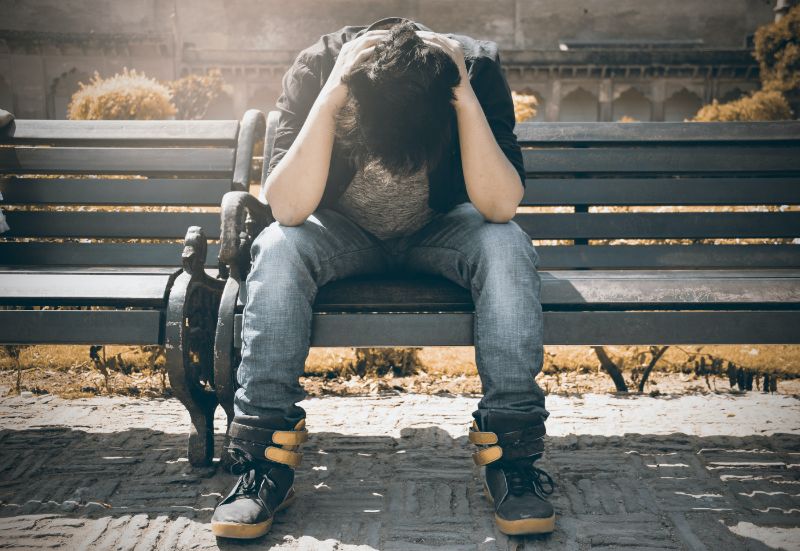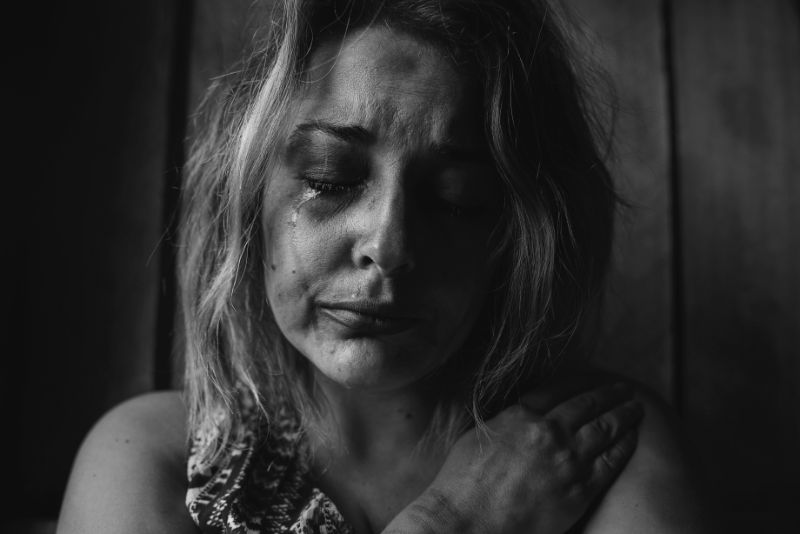Dating to set yourself up for a healthy, serious relationship is more than just jumping on an app, going on a few dates and assuming the rest is history.
You have to be aware not only of your own strengths and weaknesses , but also the process of assessing someone’s ability to be a healthy partner.
In short, your love life shouldn’t be your trauma story.
Learning to identify what a cycle of a toxic relationship is early on, gives you a chance to be able to end it and avoid it from happening again.
What are the cycles of toxic relationships?
One of the big keys to know if you are in a toxic relationship, is that a cycle forms. Healthy relationships have seasons, toxic relationships have cycles.
The major sign that you are in a toxic relationship is that it never progresses and instead continues to go around in circles of destructive patterns and behaviour.

A cycle of a toxic relationship usually consists of the following episodes:
Attraction and strong attachment without assessment
This is where we confuse chemistry with compatibility or assume that our feelings are an indication we should be with someone. This progresses to intimacy which then increases the attachment in our brain and heart.
Conflict (inner or outer)
A conflict then occurs either inner or outer (between the couple) and one person or both starts to engage in toxic behaviour that begins to escalate.
Anxiety and fear
Anxiety and fear set in which then causes one or both persons to react instead of choosing a wise response. This fuel the conflict even more because it usually gives one person control over the other.
Climax and Drama
This is where it reaches its peak of drama. Threats and ultimatums are made. Feelings are hurt and extreme behaviour and choices are created out of a volatile emotional state.
Withdrawal
One person pulls back which increases the toxic dynamics. Either one person over compensates for their withdrawal or the relationship becomes a stalemate until someone gives in.
Fear of Abandonment
If the withdrawal stage lasts long then fears of being left alone or abandoned can set in. The person who tried to walk feels lonely and begins to wonder if things were really that bad.
Negotiation and Second chances
This leads to negotiation and justifying the toxic behaviour in order to convince themselves or the other person that it can work.
Separation Anxiety
Either one or both people fear the loss of the other as they have become co-dependent on them for unhealthy reasons and so will go back to try and make it work. In which intimacy and attachment will begin all over again.
Toxic habits that seem normal
If you are in a toxic relationship, chances are you are unconsciously accepting behaviour that you believe to be ok. When we become familiar with certain situations we tend to become desensitized to what is actually normal or not.
Our brain accepts the reality we have as the truth even if it is toxic for us, hence why we can be blindsided to the standard of the relationship we are having.

We assume that having conflict or constant arguing in a relationship should just be something that is tolerated because we are all human after all.
Our mind and heart waters down the severity of a toxic relationship because it has learnt to accommodate what we are being exposed to.
Here are some examples of what toxic habits may seem normal, but are actually a red flag:
Constant Conflict
Whilst conflict in a relationship is normal, the amount and type of conflict is what determines whether or not it is healthy.
Toxic relationships will have constant conflict both inner and outer that never seems to get resolved.
This type of conflict will not only involve constant verbal arguing but also lack of agreement and unity in the little things.
Ultimatums
A huge sign of toxic behaviour is the constant use of ultimatums to try and control the situation. Giving someone a limit with a threat happens frequently in toxic relationships as it feeds the drama that these types of relationships and people crave.
Extreme highs and extreme lows
We all know that relationships will have their moments of ups and downs. However toxic relationships take these moments to the extreme.
A common phrase you may hear someone say when they are in a toxic relationship is: “ When it’s good , it’s really good…but when it’s bad , it’s really bad…and it seems to have more bad than good’.”
This represents the volatility of the relationship and again increases the drama which makes it addictive.
Giving second chances / On and Off Relationship
Whilst every relationship needs a certain amount of grace, toxic relationships rely on grace to try and keep or save the other person.
Grace without boundaries is a recipe for rewarding the same toxic behaviour over and over again.
Relationships that are on and off and never seem to progress are relationships that have toxic habits instilled in their foundations.
Serious dating recommendations
Here are our top recommendations for serious dating services. Check them out today!

- Expert in finding a lasting relationship for you
- For mature and younger singles looking for love that lasts
- If you're looking for matches with serious intentions, you're in the right place!

- Meet your crush, friends and lasting love
- Free membership and Free registration!
- Engaging flirts guaranteed!

- Free registration
- Verified members
- A modern and user-friendly interface
- Members who are looking for hookups
- Safe and secure

- Best for: finding friends with benefits only
- Free membership: Free registration, limited
- Users: 70,000

- Best for: Singles looking for no strings attached fun
- Free membership: Free registration, limited
- Users: 54 million

- Large database of verified & attractive Asian and European singles
- Efficient communication tools for real relationships
- Top-level safety and professional support

- A dating site that allows you to meet beautiful Asian, European and Latino singles
- Real-time communication with efficient tools
- Professional dating services
Fixing it and leaving – how to prepare
Trying to fix a toxic relationship is something that requires professional intervention, time, boundaries and accountability.
Even then there is no guarantee that this relationship can be changed and in most cases, one should consider leaving a toxic relationship as soon as possible.
A toxic cycle is like a circle. And the only way to find the end is to create one, by breaking that circle.
There won’t necessarily be an ideal or perfect time to confront what you need to correct, however it’s time to switch on your emotional maturity and see things for what they are.
We often stay in toxic relationships thinking we can fix them based off the following myths:
Thinking You Can Change Them
Consider how hard it is to change yourself and that will help you grasp the magnitude of trying to change someone else. Whilst we can influence and encourage someone, we cannot force them to change.
The key here is to focus on what you can control and change, which is your own choices and association with this person.
This will give you a sense of direction and mean that you can take immediate action to try and break the cycle.
Using Time as A Reason
Just because you already have invested so much time and emotion into someone, does not mean you are obligated to continue if it is toxic.
Time does not guarantee someone changing if they presently cannot commit to healthy behaviour.
You need to set a boundary that sets you up to exit the relationship if it is destructive regardless of time.
Love is All You Need
Sorry to burst the bubble, but you need more than just love. And what you are experiencing is not love.
Whilst love can be unconditional, relationships need conditions in order to maintain healthy standards. Your love cannot save them if they are unwilling to be saved.
Focusing on self-love and producing behaviour and decisions that reflect this self-love is what helps you set boundaries and prepare to leave.

How to move on from a toxic relationship
The hardest part is being able to move on from a toxic relationship. Just because the relationship ended, doesn’t mean the feelings or the trauma did as well.
Like any break up, there will be a grieving period which is essential to your healing.
Allow yourself to feel what you feel without guilt. You are allowed to miss them even though they weren’t good for you.
Just don’t use the feeling of longing as an indication that you should go back to them. Access to them doesn’t mean you have authority to connect with them.
After you have passed the phase of sadness and grief, you may begin to feel anger and resentment towards that person.
Questions like “why did they treat me like this?! “or “Why couldn’t they just get help and change ?!” may pop into your mind accompanied with frustration.
Next is the stage of negotiating and thinking of all the ways it could have worked out. This is the tempting stage to try and reconnect to see if things could be different if you were to start again.
It is the stage where we need a lot of accountability and outside perspective so we don’t lose sight of the reality of what this type of relationship was.
Eventually you will move on and learn to have a certain level of grace and indifference to that person and toxic relationship. So be patient with yourself and the process.
Help resources and how to reach out / what to know
One of the key things we need to know when breaking a toxic relationship cycle is this: you are not a captive to it permanently!
We often feel like we are trapped by our feelings or circumstances when in reality it’s mostly to do with our fears and mind-set.
If you feel like you are a victim of microaggressions, narcissism or any type of abuse, then that should be reason enough to reach out to someone to get help.
People who are in toxic relationships can feel guilty for wanting to get help because they convince themselves that they can fix it or are at fault for being in one in the first place.
What you need to remember is that asking for help does not make you weak. In fact, it takes strength to admit that you have entered something toxic and now need to leave.
Choosing to channel your thoughts and energy into productive thinking and actions is fundamental to continuing to build your strength to break free.
Having an exit strategy is the best way to ensure that you are able to end a toxic relationship and stay away from it even when you are tempted to go back.
Remember the reason why a toxic relationship is toxic is because of the cycle of leaving then coming again constantly in hopes that it will be different each time.
Having support through either family , friends or a professional is the best way to ensure you are able to beat this and move towards the healing and peace you need.